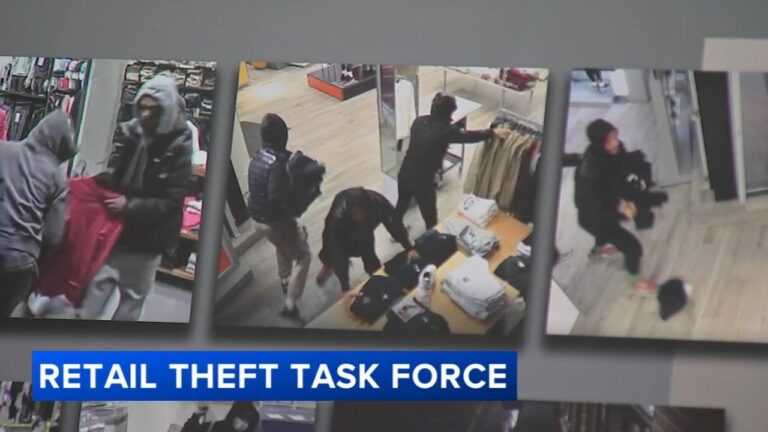Pennsylvania’s New Task Force Disrupts Major Organized Retail Theft Networks
In a landmark effort to curb organized retail crime, Pennsylvania’s recently launched specialized task force has successfully dismantled several criminal groups accused of orchestrating thefts exceeding $2 million statewide. This initiative targets the sophisticated, coordinated shoplifting operations that have been causing escalating financial damage to local retailers. Officials revealed the outcomes of this extensive operation earlier this week, underscoring their dedication to protecting the state’s commercial interests and community well-being.
- Arrests made: 18 individuals
- Retail locations impacted: Over 25 stores
- Stolen merchandise categories: Consumer electronics, beauty products, apparel
- Recovered assets value: Nearly $1.5 million
| Task Force | Operation Length | Primary Methods |
|---|---|---|
| Organized Retail Crime Enforcement Unit | 6 months | Undercover surveillance, advanced monitoring, inter-agency cooperation |
Innovative Tactics and Technology Fueling the Retail Theft Investigation
The breakthrough in this case was achieved through a strategic blend of cutting-edge surveillance tools and strong community partnerships aimed at dismantling organized retail theft rings. Investigators leveraged real-time analytics software to detect unusual purchasing behaviors across various retail chains, enabling rapid identification of theft hotspots. Undercover agents were embedded in critical locations to collect direct intelligence, which, when combined with digital forensic analysis, exposed the complex networks behind these large-scale theft operations.
Core components of the investigative approach included:
- Multi-agency collaboration involving local law enforcement, state investigators, and retail security personnel pooling resources and expertise.
- Deployment of advanced surveillance systems such as high-resolution cameras and automated license plate recognition to monitor and trace stolen goods.
- Coordinated tactical raids based on intelligence, resulting in prompt arrests and evidence recovery.
| Investigation Component | Tools & Techniques |
|---|---|
| Data Surveillance | Behavioral Pattern Recognition Software |
| Visual Monitoring | High-Definition Cameras & License Plate Readers |
| Fieldwork | Undercover Operatives & Targeted Raids |
| Inter-agency Coordination | Joint Task Force Operations |
How the Crackdown Benefits Pennsylvania’s Retailers and Communities
The recent enforcement actions spearheaded by the new task force have ushered in a notable improvement in Pennsylvania’s retail environment. Retailers, long burdened by organized theft rings, now report increased confidence and a sense of security as these criminal groups face prosecution for allegedly pilfering goods valued at over $2 million. This reduction in theft has allowed businesses to better manage inventory, reduce losses, and enhance the shopping experience for customers. Additionally, community members are enjoying safer commercial areas and renewed trust in local commerce.
Both business owners and residents have identified several key advantages resulting from the crackdown:
- Reduced operational expenses due to lower shrinkage rates and diminished security costs.
- Job retention and potential growth as stores stabilize financially and explore expansion opportunities.
- Enhanced community relations fostered by cooperative efforts between law enforcement and local stakeholders.
- Improved public confidence in both retail establishments and policing effectiveness.
| Metric | Pre-Crackdown | Post-Crackdown |
|---|---|---|
| Monthly Retail Theft Incidents | 120 | 35 |
| Average Inventory Loss (% of stock) | 8.5% | 3.1% |
| Customer Theft-Related Complaints (monthly) | 45 | 12 |
Strategies to Fortify Retail Security and Foster Law Enforcement Partnerships
Addressing the rise in retail theft requires retailers and law enforcement agencies to cultivate robust, proactive collaborations. This involves establishing consistent communication channels, sharing intelligence databases, and coordinating patrols focused on high-risk areas. Creating joint task forces, akin to Pennsylvania’s Organized Retail Crime Unit, can amplify surveillance capabilities and enable rapid responses that disrupt theft rings before they escalate. Retailers are encouraged to adopt technologies that integrate seamlessly with police systems, facilitating immediate crime reporting and intervention.
Further recommendations emphasize comprehensive training for retail employees on identifying suspicious behavior and de-escalation techniques aligned with law enforcement standards. Community outreach initiatives involving both sectors can raise public awareness and deter criminal activities. Below is a summary of proven collaboration strategies that have enhanced recent enforcement efforts:
| Approach | Advantage | Illustration |
|---|---|---|
| Shared Intelligence Platforms | Accelerated identification of habitual offenders | Inter-agency data sharing systems |
| Joint Enforcement Teams | Expanded manpower and specialized skills | Pennsylvania’s Organized Retail Crime Unit |
| Employee Education Programs | Enhanced incident management | Police-led training workshops |
| Community Involvement | Increased vigilance and reporting | Neighborhood watch partnerships |
- Integrate advanced surveillance technologies
- Encourage real-time crime reporting systems
- Standardize communication protocols across agencies
- Conduct regular cross-sector training sessions
Conclusion: Advancing Pennsylvania’s Battle Against Organized Retail Theft
As Pennsylvania’s newly formed task force continues its targeted operations, law enforcement remains steadfast in dismantling organized retail theft rings that disrupt communities statewide. With over $2 million in stolen merchandise recovered and numerous arrests secured, this initiative represents a pivotal move toward safer neighborhoods and enhanced accountability. Both residents and businesses can anticipate ongoing efforts that reinforce vigilance against crimes undermining local economies and public confidence. Further developments will be shared as investigations progress and additional information emerges.








